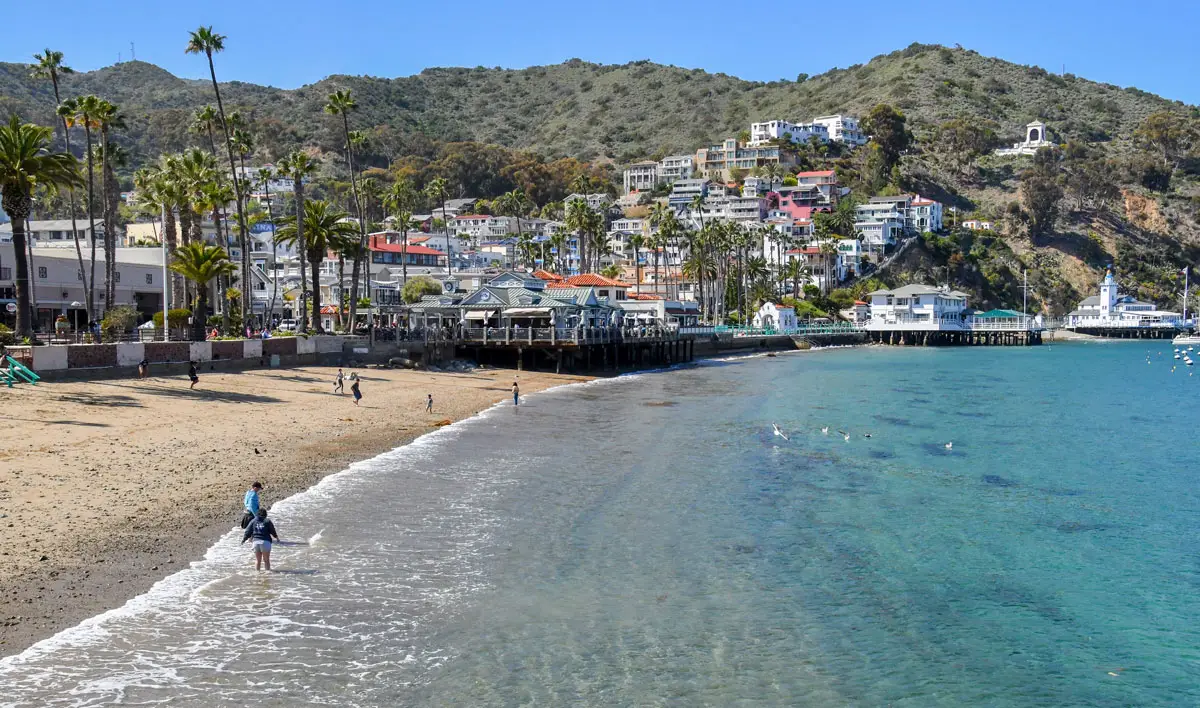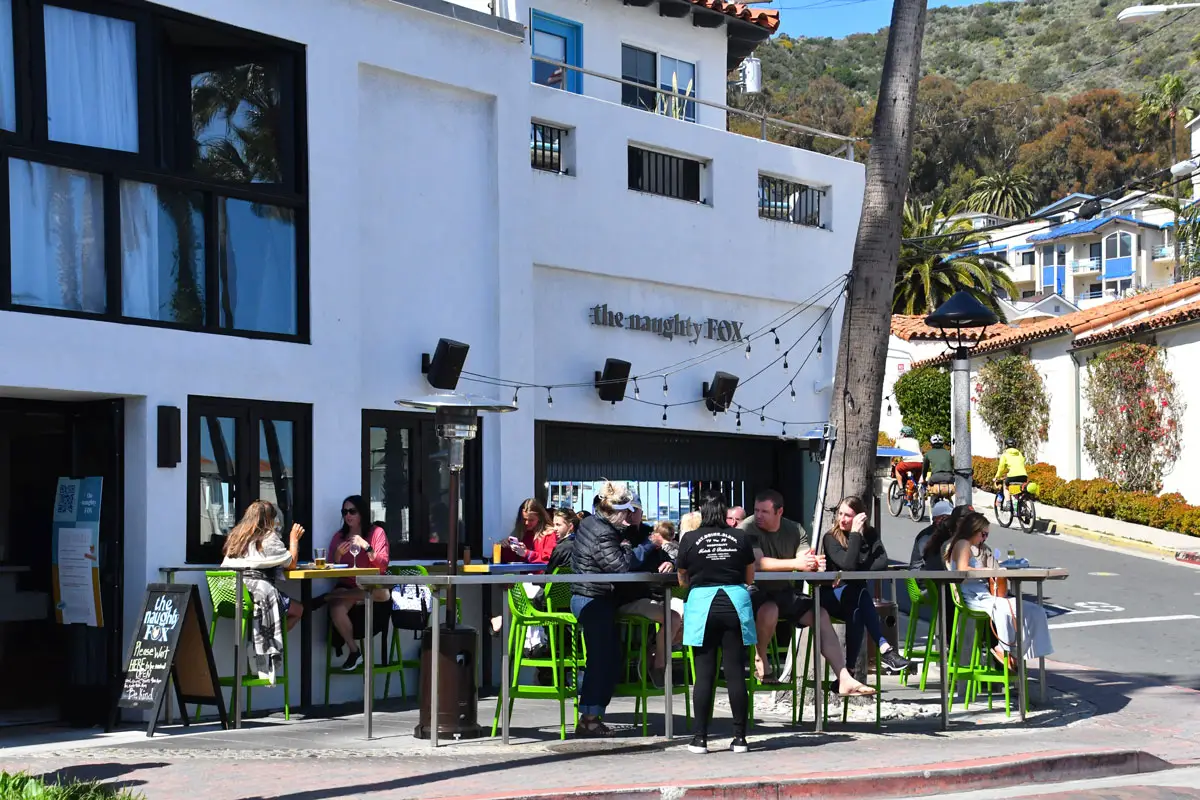We are halfway into our two-hour tour with Bison Expeditions on Catalina Island when tour guide Steve Carroll assures us that his passengers see bison 95% of the time.
As I’m thinking that we may be one of the unlucky 5%, we veer left on the dirt road and there they are — a hefty, wooly bull, possibly 2,000 pounds, and four smaller cows, just a few steps from our vehicle. They saunter across the road, hardly acknowledging our presence.
“His harem,” says Carroll, as he brings the bio-fuel, open-air Hummer to a halt. “They have a cute and cuddly look that gives visitors the sense that they are harmless and approachable…” but their demeanor can change quickly.
“The biggest misconception that visitors have is that bison are slow, lumbering animals, but they can run up to 35 miles an hour and are very agile,” Caroll continued. “Humans can’t outrun them when bison decide to defend themselves from what they perceive as a threat.”

We arrived in Avalon, the island’s only town, 24 hours earlier on Catalina Express, the ferry from Dana Point. Much of the one-hour cruise took us through heavy fog, but about 20 minutes before arrival, the island’s rugged mountains appeared through the soupy haze like the culmination of a magic trick.
After disembarking, we wheeled our luggage to the end of Crescent Avenue and the recently renovated Bellanca Hotel. The 40-room boutique hotel received a nearly $4 million renovation in 2020 that created a contemporary nautical vibe with its rooftop sun deck, jaunty umbrellas and nautical-flag tables.
From this perch, guests can observe arriving cruise ships, sailboats anchored in the crescent-shaped harbor, the picture-postcard hills to the southeast and pedestrian traffic that flows from the ferry terminal all the way to the Casino and beyond to Descanso Beach.
While we could linger here, there are things to see and do, like our meet-up with the bison.
These five American bison are descendants of a few that were imported to Catalina in the 1920s for film-making purposes but were never deported. The herd is maintained by the Catalina Island Conservancy at no more than a manageable 150. There has been only one birth in several years.

This is not our first trip to Catalina, but we’ve never been up and into the nearly uninhabited areas. As we bounce along in the Hummer, Carroll’s entertaining narration provides a history of the island and also points out endemic animals and native and invasive plant species.
Eventually, we reach the near-summit of Catalina’s second-highest point, Blackjack Mountain. The ocean is visible to our right and left nearly 2,000 feet below, confirming that indeed, we are sitting on a dramatic and precipitous outcropping in the Pacific.
Catalina has been inhabited for 7,000 years and has a rich history of Native American culture. The island was eventually purchased by chewing gum magnate William Wrigley in 1919, who invested millions to make it “a playground for all.”
But to assure that most of the island would remain undeveloped, Wrigley created the conservancy, which owns and manages 88% of the 74 square miles. This keeps Avalon at about 4,000 residents. About 500 people live elsewhere on the island.
Post-tour, we return to Bellanca’s restaurant and bar, the Naughty Fox, the name a nod to the island’s tiny fox, found only on Catalina. The outdoor seating is the perfect spot to watch Catalina go about its business via foot traffic, bicycle, utility vehicle and golf cart, the main mode of transport for both tourists and residents.
“The island only allows a certain number of regular cars and you have to apply for a permit,” explains Carroll during our Hummer tour. “The waiting list is about 20 years.”



